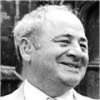 | Name: Colin Dexter
Overview: Colin Dexter was diagnosed in the same year that his Inspector Morse novels began to be shown on TV, after his wife recognised his symptoms and urged him to see his GP. He was admitted to hospital immediately and put on an insulin drip. He sometimes finds it a bother to take all his insulin and blood-testing equipment with him on his travels, but doesn`t otherwise allow diabetes to dominate his life. He continued to be a `very big drinker indeed` until 2004, when he gave up alcohol altogether.
Hits=2 |
|
| 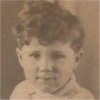 | Name: Allan Jones
Overview: Allan Jones` father was a miner with six children. They had little money but had to pay for insulin and equipment until the National Health Service was created in 1948. They couldn`t afford cotton wool and re-used needles until they were blunt. When Allan was 15 he got a job as a messenger on the railways but had to pass a medical before being promoted. He feared he would lose his job if his diabetes was discovered, so took with him a sample of his brother`s urine! He passed the medical and worked happily on the railways for 30 years.
Hits=2 |
|
|  | Name: Hans Csucsmi
Overview: Hans Csucsmi`s early childhood in Vienna was disrupted by war: street-fighting; the arrival of Nazi troops; the army`s occupation of his school; evacuation to Hungary; and flight from the Russians at the end of the war. After returning to Vienna, he did well at school and worked in a fashion house before emigrating to England in 1955 to train as a mental nurse. He married a fellow trainee and had one son. While working as night manager of a hospital, he ate and smoked both day and night, and became very overweight. After diagnosis, he changed his lifestyle completely.
Hits=2 |
|
|  | Name: Gillian
Overview: Gillian was diagnosed when she was 23, while working as a
journalist in London. At the age of 26, a consultant advised her that if she
wanted children, it would be a good idea to have them soon, because "you`ve
got to consider whether you`re going to see them grow up". Her partner
didn`t want to be a father at that stage, so she decided to be a single
parent and has brought up two children on her own. Her daughter was
diagnosed with diabetes in 1999.
There is also an interview with Gillian`s son, Tom.
Hits=1 |
|
|
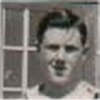 | Name: Ron Craythorne
Overview: Ron Craythorne worked all his life in the family business of carpentry and joinery but, when he retired, there was no-one to take over, so now he and his wife give shows for charity, showing people round the old workshop and selling the products of his woodturning. (He carved and painted the wooden fruit and bowls shown in his photo.) He has played team sports all his life and diabetes has caused him few problems. However, he knows of the problems it can cause, from members of the diabetic group he founded several years ago.
Hits=1 |
|
| 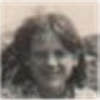 | Name: Mary
Overview: Mary`s father was a baker and her mother a factory worker. When she was diagnosed, the hospital suggested that they should buy a book on diabetes by R.D. Lawrence, but she doesn`t think they read it. She feels she was given very little information, and remembers thinking that her diabetes might disappear when she began to have periods at 15. She made little effort to control her diabetes until she went to a clinic in Oxford in 1983. She works as a podiatrist and reckons that about 75% of her patients have diabetes
Hits=1 |
|
|
 | Name: Leon Cowdery
Overview: When Leon Cowdery left school at 15, his diabetes barred him from his chosen profession of sign-writing because he was not allowed to go up a ladder. He worked as a cycle mechanic and then, in order to avoid going to his parents` Seventh-day Adventist church, he took up floor-laying at weekends. This led him into the building trade and he has been going up ladders ever since! He designed the house in which he lives and, now that he`s semi-retired, he helps his wife with gardening and maintains four motorbikes from the 1950s.
Hits=1 |
|
|  | Name: Shirley Jones
Overview: Shirley Jones` parents had little money to spend on food and she remembers eating bread and jam `many, many times`. She married at 19, divorced, married again at 21, and then her second husband left her to bring up two small children alone before she was diagnosed with diabetes, aged 32. She was recruited into the UK Prospective trial for Type 2 diabetes, but rapidly became insulin-dependent. Until recently, she ran a pub with her current partner. She is now on kidney dialysis.
Hits=1 |
|
|
 | Name: Emma Cherry
Overview: By the time Emma Cherry was diagnosed in 1988, GPs were familiar with childhood diabetes; hospital children`s wards were used to dealing with it, and Emma remembers a wonderful diabetes specialist nurse who showed her how to inject herself, and later called at her home twice daily to supervise her early attempts. Her schools, university, and colleagues at work all accepted her without any fuss, and she has never been made to feel `different`. Injections and blood tests are such a routine part of her life that she wonders how she would cope with a cure!
There is also an interview with Emma`s mother, Zin Cherry.
Hits=1 |
|
| 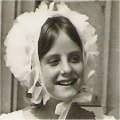 | Name: Harriet
Overview: Harriet was diagnosed when she was 12, and loved Great Ormond Street Hospital, where she was treated until she was 17. Her grammar school couldn`t cope with her diabetes, so she left at 15 to do O and A Levels elsewhere, and eventually gained a Diploma in Fine and Decorative Arts. She has worked for the Tate Gallery and for a company that bought art for corporations, and has also run her own business, and worked in college and university administration. Her daughter was diagnosed with diabetes at the age of 9.
There is also an interview with Harriet`s husband, Greg.
Hits=1 |
|
|
 | Name: Tas Bokhari
Overview: Tas Bokhari`s parents were wealthy landowners in India. As Muslims, they were forced to migrate to Pakistan in 1947 and many of his family were killed on the way. He was educated in a mission school and a college before moving to England in 1961. He married an English librarian in 1964 and has two children. After acquiring an HNC in Mechanical Engineering, he worked as a motorcycle inspector and design engineer and then ran a nursing home. He also had a part-time job at Edgbaston cricket ground and was well-known in Pakistan for his radio cricket commentaries.
Hits=1 |
|
| 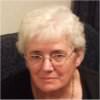 | Name: Lesley Prichards
Overview: Lesley`s daughter, Julie, was diagnosed with diabetes in 1978, aged nearly five, and she was in hospital for three weeks. Parents were not allowed to stay with their children, but Julie enjoyed hospital and decided then that she wanted to become a nurse. (She is now a Diabetes Research Nurse.) Meal times were rigid at first and Lesley and her husband still keep to those rigid times, though Julie does not. Later, while Julie was pregnant, she stayed with her parents whenever her husband worked nights - and Lesley feels that she`ll always have some involvement in her daughter`s diabetes.
Hits=1 |
|
|
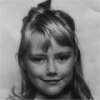 | Name: Clare
Overview: Clare was brought up in a remote Cornish hamlet. Although she developed Type 1 diabetes around the age of 5, she was not given insulin until about 4 years later and was instead kept on a near-starvation diet. She rebelled for many years and only began to take care of herself after she was registered blind in 1984. She went on to gain a second BA, MA and PhD and is now a university research fellow. She has been helped by coming to regard her lack of sight as `an issue around social equality as opposed to a medical issue`.
Hits=1 |
|
|  | Name: Kushira Hackett
Overview: Kushira Hackett`s mother was white and her father black – from Guyana. Her parents split up when she was 5 and her mother later married a Jamaican. After diagnosis, the hospital staff explained to her mother about portions and gave her scales for weighing food, but gave no explanations to Kushira. Her mother also gave no explanations, and she thinks this led to her rebellion against diabetes, and to her leaving home aged 16. She had a period of homelessness, but later gained a law degree and now lives happily in Birmingham with her partner and two children.
Hits=1 |
|
|
 | Name: Joan Wilson
Overview: In 1954, Joan Wilson was appointed as a Diabetes Specialist Health Visitor by Dr. Joan Walker of Leicester Royal Infirmary, who believed that patients would benefit from being ‘taught how to live their lives at home`. As a fully trained nurse, she could claim to be one of the UK`s earliest Diabetic Specialist Nurses. She visited homes and gave patients her own home phone number; visited schools and workplaces; liaised with district nurses and GPs and provided patient education at the Infirmary clinics. She was involved in consultant-led clinics in smaller towns and in helping GPs to set up clinics.
Hits=1 |
|
| 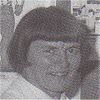 | Name: Margaret McKiddie
Overview: Dr. Margaret McKiddie worked in Glasgow and Dundee before becoming a consultant at Gloucestershire Royal Hospital in 1973. The hospital was too small to employ someone specialising solely in diabetes, but all patients with diabetes were referred to her and her official title was Consultant Physician with a Special Interest in Diabetes. She had to teach everything to the newly-diagnosed herself until a specialist diabetic nurse was appointed in 1989, who made a `huge amazing difference` to her working life. She retired in 1998 and in 2002 she became the British National Endurance Riding Champion.
Hits=1 |
|
|
 | Name: Patsy
Overview: Patsy is one of ten children. Her parents emigrated from Jamaica in the 1950s. Her mother worked as an auxiliary nurse and her father as a builder. After diagnosis, she resented having to weigh portions of carbohydrate, while her family could eat what they liked. She still calculates the weight of food. The question `Why me?` has persisted throughout her life. She feels that everything possible has gone wrong with her health and she is now on haemodialysis. But her love for her young son keeps her going and, despite poor health, she`s determined to spend time with him.
Hits=1 |
|
|
| Search returned 20 matches |